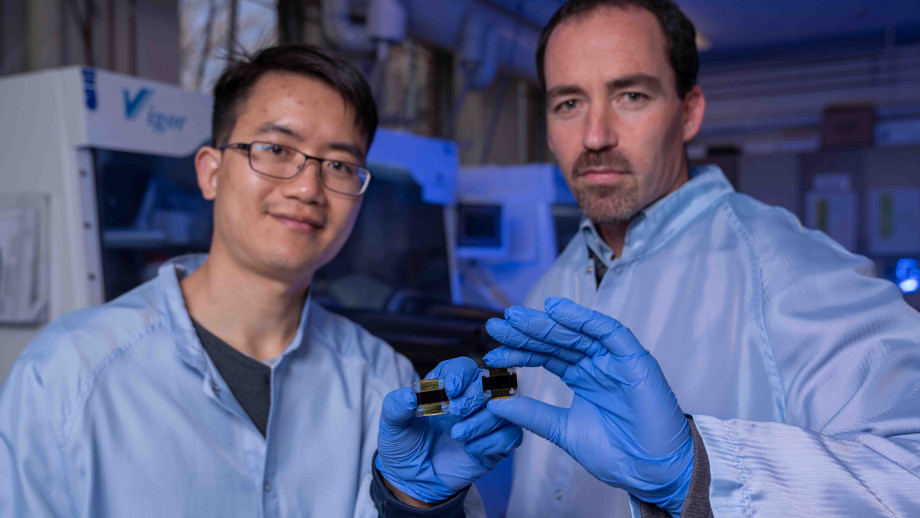The new perovskite efficiency record, independently attested to by the CSIRO Photovoltaics Performance Lab, the only laboratory in the Southern Hemisphere accredited to verify solar cell efficiencies, means that 21.6% of sunlight hitting the cells is convertible into energy. This is quite a coup considering the efficiency of the typical solar panels being installed on rooftops throughout Australia have efficiencies of around 17-18%.
“There are three things you’re trying to achieve with solar cells,” said Associate Professor Thomas White, “you’re trying to make them efficient, stable and cheap. Perovskites are the future of solar cells.”
Perovskite cells, a composite of abundant elements such as carbon, hydrogen, nitrogen, iodine and lead, have inhabited the margins between scientific development and commercialisation for several years. The cells are cheap to manufacture and possess higher practical and theoretical power-conversion efficiencies than typical silicon cells. However, the technology has been hindered for its instability, its sensitivity to temperature and moisture and even a certain risk of toxicity due to the presence of lead.
“The real challenge now is making them stable enough to be used on a rooftop for example,” continued White, “where they have to be able to last 25 to 30 years in extreme temperatures.”
The ultimate aim is to produce tandem solar cells composed of both perovskites and silicon. “Putting the two together can potentially give us higher efficiencies than either one alone,” added White.
White and his team at the ANU College of Engineering and Computer Science have been working with perovskite solar cells for years as the scientific community is aware that solely silicon cells are reaching the peak of their theoretical efficiency. Alternative technologies must be sought if we are to continue pushing the boundaries. “It’s (silicon) a very, very good material,” said White, “but it’s going to reach the upper limit of its efficiency in the next five to 10 years.”
The new record means that perovskite cells of a size that is scalable (one square centimetre) can now produce 216 watts of electrical power per square metre. This was achieved by Dr Jun Peng, who developed a novel nanostructured material that makes it possible for a solar cell to produce both high voltage and high current simultaneously.
Perovskite is a great hope for next-gen solar with institutions the world over researching and testing the cells’ limits. Europe is particularly engaged in the pursuance of perovskite tandem cell research with laboratories at Helmholtz-Zentrum Berlin (HZB) and Oxford PV, pushing conversion rates past 25%, though these are not on the scalable level of White’s team at ANU.
The study was assisted with funding from ARENA.
This content is protected by copyright and may not be reused. If you want to cooperate with us and would like to reuse some of our content, please contact: editors@pv-magazine.com.









“The ultimate aim is to produce tandem solar cells composed of both perovskites and silicon. “Putting the two together can potentially give us higher efficiencies than either one alone,” added White.”
IF the new TOPCon cells can be mass manufactured, it seems the construction of the cells themselves with a very thin layer of oxide coating over the cells themselves, could be amenable to a spray on coating of perovskites, that could be tuned to a different frequency in the light spectrum. Making low light (cloudy) days almost as productive as bright sunny days. Could one get the solar harvest up to 30%? 40%?